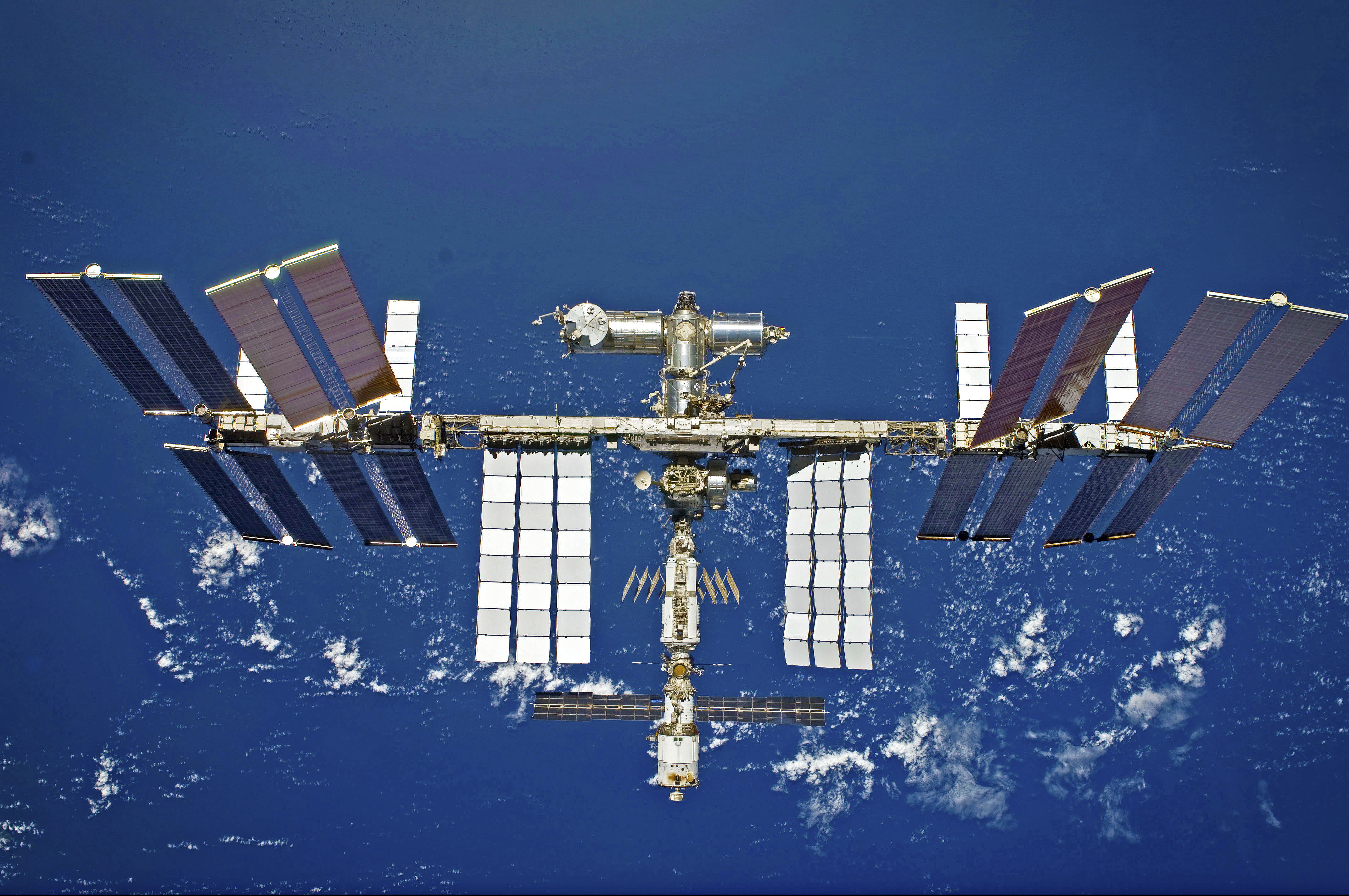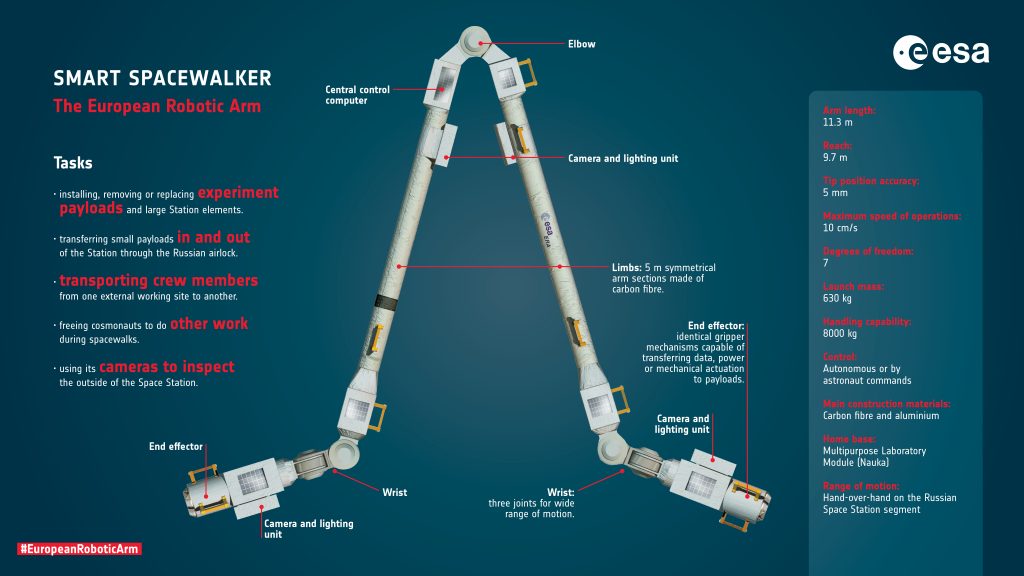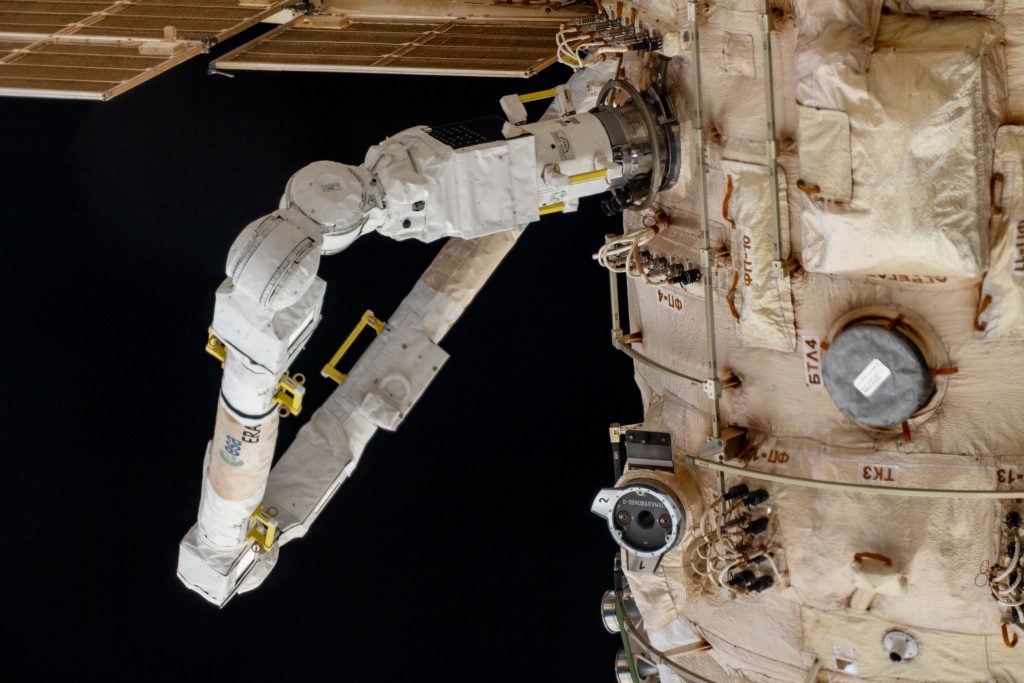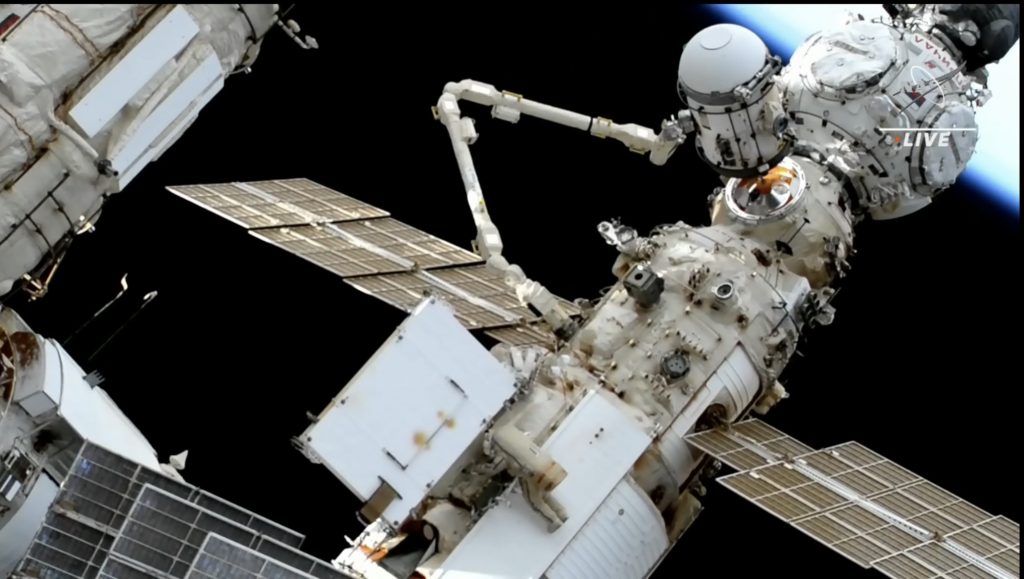In just three spacewalks so far, Europe’s robotic helper stretched to its full 11.3-metre length, moved between modules, and lent a hand installing new elements for the orbital complex.
European teams on the ground praised the performance of the newest Space Station robot that works autonomously and can be operated by astronauts to an accuracy of five millimetres. The smart robotic spacewalker was launched in July 2021 alongside the Multipurpose Laboratory Module, also known as Nauka.
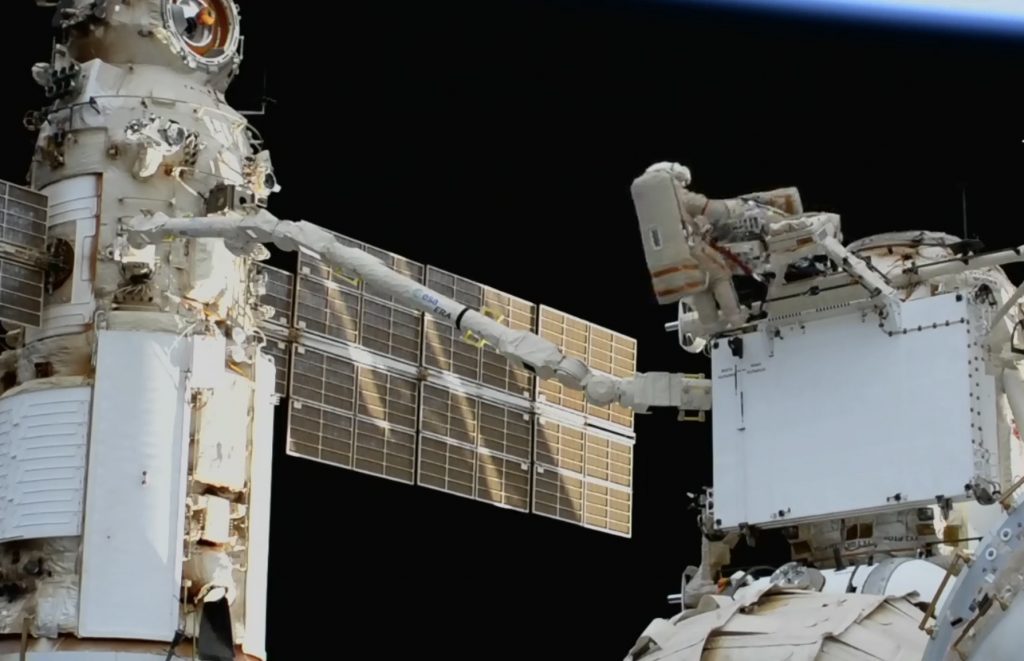
The European Robotic Arm lends a hand to transfer a radiator panel between space modules. Credits: NASA
“The first operations of our robotic arm have been remarkably good, especially after spending 13 years stored on Earth waiting to launch with Nauka,” says Philippe Schoonejans, ESA’s project manager for the European Robotic Arm.
The robot was awakened in May 2022 for its first moves in orbit. Philippe watched the action from the ERA support centre, a modest control room in ESA technical heart ESTEC in Noordwijk, The Netherlands. From there, the ERA team monitored the arm’s choreography over the last two years.
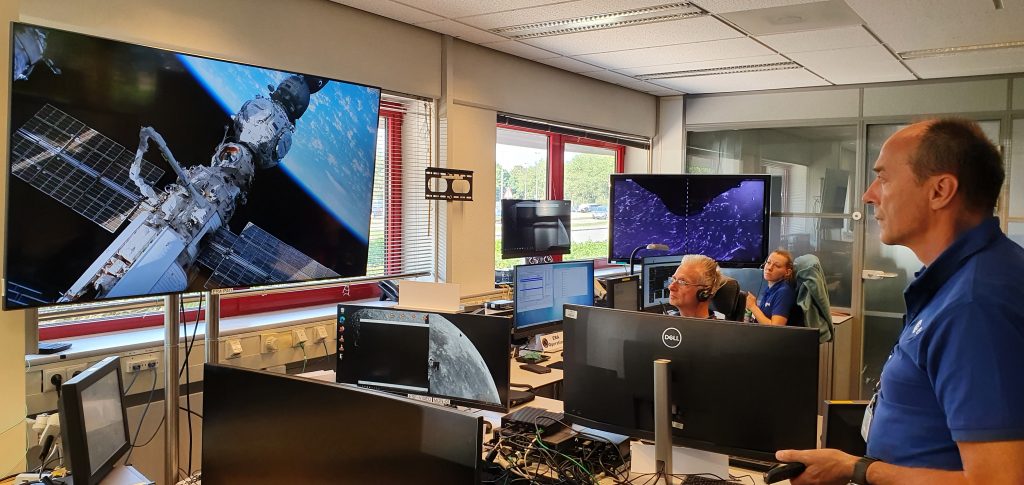
European teams follow the European Robotic Arm first moves from the ERA support centre in The Netherlands. Credits: ESA
It’s getting better all the time
Initial issues with the vision system, power and temperature levels called for quick fine-tuning from ESA engineers, who learnt to improve the arm’s performance with every new task.
Shortly after ERA was activated, its brain was either not getting any data or too many errors in the power channels. “We ran many tests in different configurations, each time carefully analysing all error data, until we managed to restore all channels,” says Philippe.
“Now that the arm is used frequently, motors and gears have smoothened. We also tweaked ERA to better adapt to the temperature changes in its mechanisms. There is less friction and the moves are now seamless,” adds Philippe.
Tweaks to the vision system allowed the arm to sharpen its eyesight using four infrared cameras and lasers to inspect the Space Station, even during night. This skill came in handy to inspect a coolant leak in the Soyuz MS-22 spacecraft in December 2022. Stretching to the max from Nauka towards the Rassvet module, ESA’s space robot obtained footage of the leak under the command of astronaut Anna Kikina.
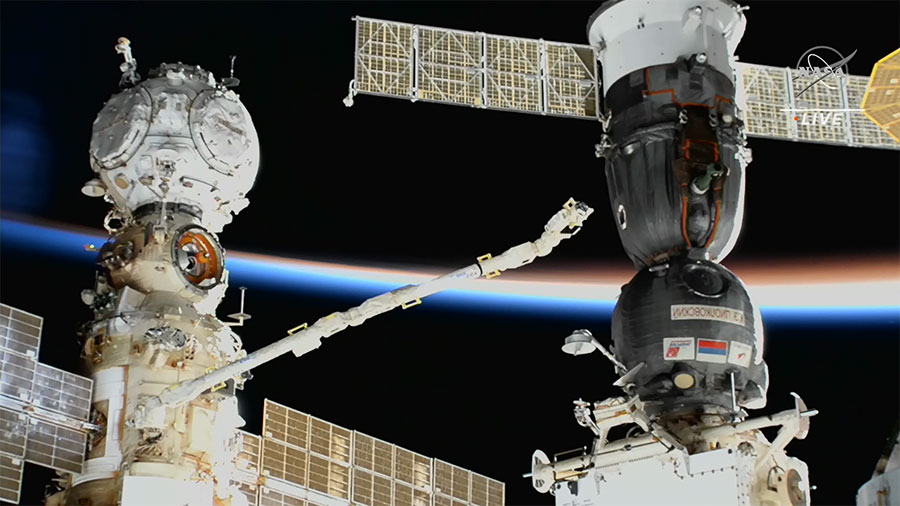
The European Robotic Arm stretches to its max to inspect a coolant leak on the Soyuz MS-22 spacecraft in December 2022. Credits: NASA
The robot can ‘see’, but also ‘walk’ around the Station grappling fixtures in an caterpillar-like movement. “It took us a while to be confident enough to leave the home base at Nauka, because the first time we tried, we needed several attempts to grapple the main basepoint,” explains Philippe.
Despite the hiccups, the arm surpassed every obstacle. “After resetting one of the end effectors – what we call the hand of the arm –, the arm finally attached itself to the module. If we would not be able to do so, then two major operations – radiator and airlock installation – would have been impossible!” he adds.
Flexibility during major tasks
The installation of the radiator for Nauka was flawless. The European Robotic Arm smoothly moved the radiator, the size of a large wardrobe, with millimetric accuracy while orbiting Earth at 7 km per second.
The International @Space_Station has a new radiator!
Thanks for the helping hand, #EuropeanRoboticArm 🤗🦾
✅ Over seven hours into today's spacewalk, the astronauts ran a "wiggle test" 👋 and confirmed the radiator is tightly fixed. #WorkSmarter pic.twitter.com/082rxPK0XH
— Human Spaceflight (@esaspaceflight) April 19, 2023
However, new challenges arose during the transfer of an airlock from the Rassvet to the Nauka module during the second spacewalk for ERA last May. Slowly but surely, the arm handled the transfer between the modules operated by an astronaut from inside the Space Station. ESA’s teams in the Netherlands monitored every command until they noticed that the arm’s target didn’t match its location and orientation in the database.
“We discussed all possible risks with our counterparts, readjusted the parameters and went ahead with the mission without being afraid of crashing a large payload into the Station. It worked and we were very proud because we had shown that ERA is flexible enough to move objects to other locations, even when we are not sure of the exact coordinates! This flexibility proved very useful so far,” he adds.
The European Robotic Arm positioned the airlock in place with millimetre precision in an operation that lasted several hours. The 11-metre robot lent a hand to the astronauts and freed them to do other jobs.
What’s next for the robot?
The European Robotic Arm is now fully operational and certified. Astronauts will use the robotic arm to save time during Space Station maintenance. Its next mission could be transporting a spacewalker around the Station like a cherry-picker crane. The arm proved itself capable of this operation during a test on 9 August.
In the meantime, ESA and Roscosmos are discussing a new agreement to continue operating the European Robotic Arm.
“We are grateful for the continued support of ESA Member States, in particular The Netherlands, all these years. Thanks to them we could enjoy this success and learn an invaluable operational experience that we are already putting to good use for future martian robots,” concludes Philippe.
Editor’s note:
The European Robotic Arm (ERA) is the first robot able to ‘walk’ around the International Space Station (ISS). Light yet powerful, the orbital arm has the ability to anchor itself to the Station and move back and forward by itself, hand-over-hand between fixed base-points.
ERA is part of ESA’s contribution to the International Space Station, a long-standing and continuing partnership between ESA, NASA, Roscosmos, Japan’s space agency JAXA and the Canadian Space Agency. The multilateral cooperation on the ISS sets out the procedures necessary to ensure the safety of astronauts and the safe conduct of the project. Agreements are only carried out according to the procedures established for the good functioning of the ISS. Following the start of the war, the ESA Council terminated cooperation on the Exomars lander and rover as well as ESA involvement in the Russian Luna missions.
ERA’s major tasks timeline
- Radiator installation on Nauka. Spacewalk (EVA 56), 19 April 2023.
- Airlock installation on Nauka. Spacewalk, (EVA 57), 4 May 2023.
- Final outfitting and Nauka radiator deployment. Spacewalk (EVA 58), 12 May 2023.
- Test for full commissioning, 1 June 2023.
- Test for transporting astronauts, 9 August 2023.


